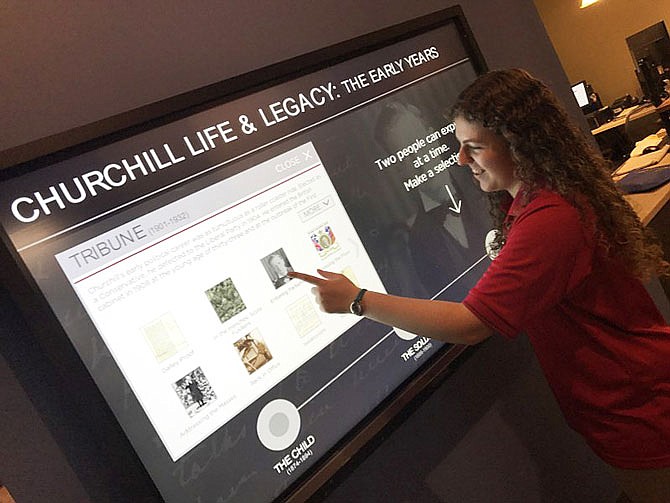Visitors to the National Churchill Museum can now enjoy an exciting new interactive permanent exhibit as a part of the ever-changing experience offered at this campus treasure.
The Churchill Life and Legacy Interactive Exhibit is composed of three massive touch screen monitors, each larger than 60 inches, which provide a timeline of Churchill's life from early childhood to his death in 1965.
The new exhibit is located just past the admission desk.
When a visitor touches the screen to reveal a specific time period in the exhibit such as "Churchill the War Years" or "Churchill the Elder Statesmen," documents, photos, letters and speeches are revealed from that era for study.
The resources for the exhibit have been taken from the largest and most important collection of Churchill archives in the world, found at Churchill College which is part of the University of Cambridge.
The exhibit was originally commissioned by the new National Churchill Library, which is housed on the campus of George Washington University in Washington, D.C.
The National Churchill Museum in Fulton is now in partnership with the library through the International Churchill Society, which means the two institutions share resources and expertise. Timothy Riley, director and chief curator of the National Churchill Museum, asked if it would be possible for the Fulton museum to gain access to the exhibit. The National Churchill Library agreed to provide the exhibit if the National Churchill Museum could find funding to purchase the technology necessary to screen the materials.
"We are very grateful to the Churchill Library for giving us access to this exhibit, which they had created at great expense," Riley said. "And we owe a great debt of gratitude to those whose generous donations made it possible for us to mount this exhibit."
This new exhibit was made possible by the generosity of The International Churchill Society, Mr. and Mrs. Jean-Paul Montupet, and the estate of Laddie Hamilton III.
The material in the exhibit, much of which is original documents, is not only easily accessible and easy to read, but multiple people can view the screens at one time, Riley added.
According to Riley, up to six people can do their own individual research. In the case of class field trips, 12-18 people can access the exhibit at one time.
The new exhibit is designed so visitors can spend a few minutes on one specific topic or spend up to three hours to experience the exhibit in its entirety.
"At the National Churchill Museum we continue to provide an interactive experience between content and visitors that is cutting edge," Riley said. "Our exhibits help history come alive and keep Churchill's lessons fresh in people's minds as well as attracting younger generations to learn and become inspired by Churchill's legacy."
For more information about the National Churchill Museum, visit nationalchurchillmuseum.org or Facebook/Churchill Museum and Twitter @ChurchillMuseum.

